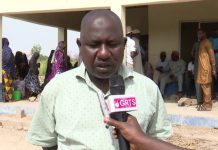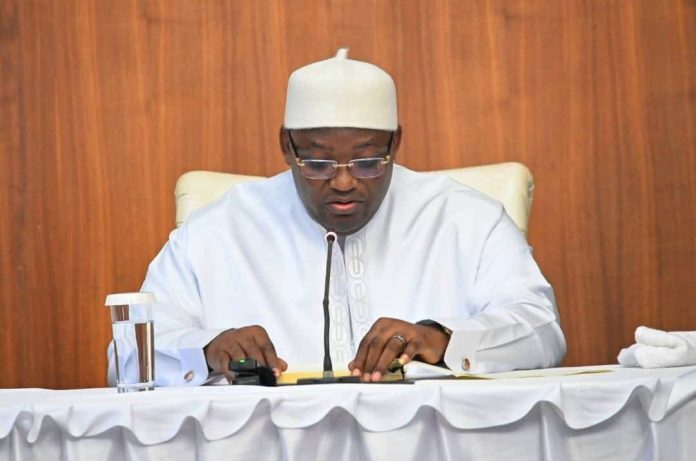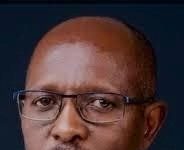By Kebba AF Touray
President Adama Barrow has announced that The Gambia’s international reserves now stand at approximately $515 million—equivalent to D37.08 billion—as of January 2025. The figure, he said, is enough to cover more than 4.6 months of prospective imports. The President made this declaration during his 2025 State of the Nation Address on Thursday, June 19, before Members of the National Assembly in Banjul.
“The Central Bank of The Gambia continues to maintain comfortable levels of reserves,” Barrow told lawmakers, underscoring what he described as a stable and improving economic outlook for the country. He projected that The Gambia’s economy would grow by 5.9% in 2025, with inflation expected to decline to 9.6% by year-end—down sharply from the 17.3% rate recorded in 2023.
Despite improved revenue collection in 2024, The Gambia posted an overall fiscal deficit of D6.7 billion, or 4.7% of GDP. President Barrow noted that the country’s debt-to-GDP ratio dropped from 75.7% in 2023 to 71.8% by December 2024. Although this marks progress, the debt level remains above the 70% sustainability threshold set for developing economies.
In response to inflationary pressures and the rising cost of living, Barrow said his government has implemented salary increases for civil servants and expanded social protection programs to assist vulnerable households. He also stressed that commodity price stabilization and a market-driven exchange rate remain central to his economic strategy, alongside climate-sensitive reforms.
A major contributor to foreign exchange earnings remains private remittances from the Gambian diaspora, which totaled $775.6 million in 2024—a nearly 4% increase from the $746.8 million recorded in 2023. Barrow praised the diaspora and development partners for their critical role in supporting the country’s resilience and recovery.
But while the reserves are currently above IMF program targets, economic observers have warned that the overall picture remains mixed. According to the IMF, The Gambia’s currency has depreciated, and there is now a 10% gap between the official and parallel exchange rates. The depreciation is putting pressure on the foreign exchange market and may signal deeper structural weaknesses.
“The country’s external position is under strain despite strong remittance inflows,” an economic policy advisor told The New York Times on condition of anonymity. “The next challenge is to manage public debt more sustainably while maintaining investor and donor confidence.”
To address these challenges, Barrow highlighted key public finance reforms under his administration, including amendments to the 2014 Public Finance Act and Public Procurement Regulations. These changes, he said, have modernized financial oversight, enhanced transparency, and improved accountability in the management of state resources.
As part of efforts to improve governance in state-owned enterprises, the President revealed that the State-Owned Enterprise Commission has signed a performance contract with NAWEC, The Gambia’s national electricity and water company, aimed at ensuring fiscal discipline and operational efficiency.
Yet, Barrow acknowledged that the effects of inflation and high living costs remain a burden on many households. “We are not where we want to be,” he said, “but we are laying a foundation for a more resilient, competitive, and sustainable economy for all Gambians.”
With reserves steady but foreign exchange pressure mounting, economists say The Gambia’s long-term economic stability will depend on continued fiscal reforms, improved debt management, and greater efforts to align spending with domestic productivity.


















